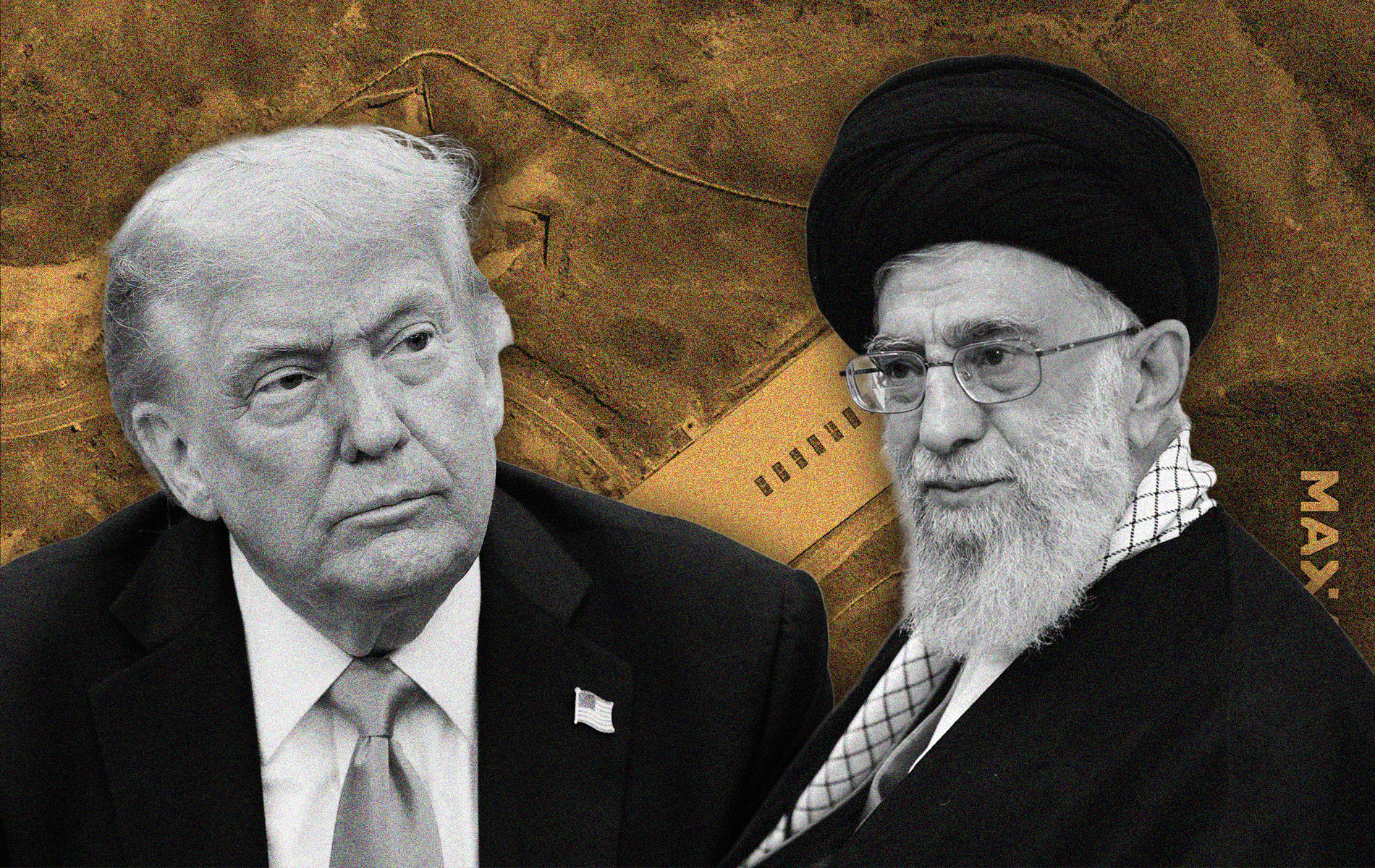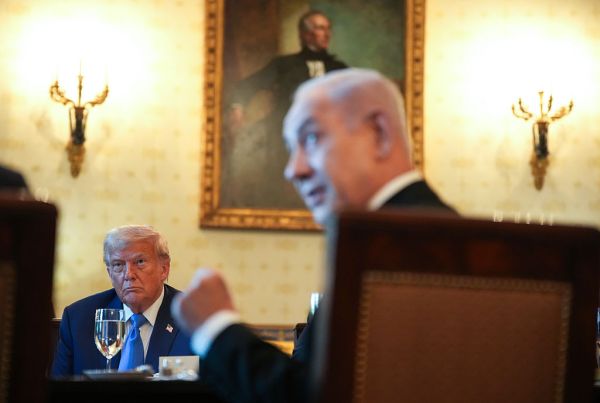The campaign to eradicate Iran’s nuclear program is a significant gamble, one that American presidents and Israeli prime ministers—including Prime Minister Benjamin Netanyahu—have considered and decided against consistently for at least two decades before June 13. For this campaign to ultimately prove to be a success, it must achieve two related things: It must eliminate Iran’s current nuclear infrastructure, and it must ensure that this Iranian regime does not acquire nuclear weapons at some later date.
That’s a tall order. The history of counterproliferation campaigns—using force to prevent another country from developing nuclear weapons—is mixed. At a superficial level, one can say they always work. Israel bombed Saddam Hussein’s Osiraq nuclear reactor in 1981, and Saddam never got a nuclear weapon. The United States also bombed Iraq’s nuclear facilities in 1991, then invaded the country in 2003, both times to prevent Saddam from acquiring a nuclear weapon, and again, he never did. Israel bombed Syria’s nuclear facility at al-Kibar in 2007, and the Assad regime never got a nuclear weapon. Israel and the United States cyberattacked the Iranian nuclear program with the Stuxnet computer virus in 2010 and Iran has not yet acquired nuclear weapons.
But scratch the surface and these cases suddenly get very messy. The myth of the 1981 Osiraq strike is that this brilliant Israeli air attack so set back the Iraqi nuclear program that the world did not have to confront a nuclear-armed Saddam when he invaded Kuwait in 1990. The reality, as we learned after the Persian Gulf War and the 2003 invasion, was exactly the opposite. Saddam was so enraged by the Israeli attack that he poured resources into his nuclear program, which made far greater progress after than it had before. We were fortunate that Saddam was stupid enough to invade Kuwait before he had a nuclear weapon, which different Iraqi nuclear scientists estimated he would have at some point between 1992 and 1995.
Thereafter, Saddam was prevented by the Gulf War and (even more so) by U.N. inspections, from acquiring a nuclear weapon. However, even then he was determined to resume work on nuclear weapons as soon as the sanctions collapsed, which he—and many others—believed was imminent in 2003. Ultimately, it probably required the U.S. invasion to ensure that he never obtained one.
Likewise, the Assad regime tripped itself up with its intervention in the 2011 Arab spring protests in Syria, which prompted the outbreak of civil war there in 2012. And the Iranians, after Stuxnet, followed the same path Saddam had in Iraq in 1981: Not only did they not stop their nuclear program, in many ways they too expanded and accelerated it.
In short, when military counterproliferation has succeeded, it has generally done so by massive ground campaigns or sheer luck. With Iran today, the Israelis are incapable and we are uninterested in the former, and luck, to paraphrase Colin Powell, is not a strategy.
The challenge of Iranian nuclear reconstitution.
Indeed, the great risk inherent in a military operation against Iran’s nuclear capability has always been that Iran would respond by withdrawing from its treaty obligations and set out to acquire a nuclear weapon as fast as it could to deter another such attack. And, of course, Iran is much closer to having a nuclear weapon today than Iraq was in 1981 or 1991, than Syria was in 2007, or than Iran itself was in 2010. Iran has enough highly enriched uranium to build up to 10 nuclear weapons already as well as plenty of uranium feedstock, none of which has been accounted for even after the American airstrikes on Iran’s Isfahan, Fordow, and Natanz nuclear plants.
Moreover, we have no idea just how much damage the American airstrikes did, especially to Fordow, which is buried deep underground. Trump administration officials claim that these sites are somewhere between “obliterated” and having taken “severe damage.” But they have yet to explain how they know that. It is certainly not visible from satellite imagery. Is it from modeling? From technical collection means? Or an Israeli human source? President Donald Trump wildly misrepresents his accomplishments all the time and then insists that everyone in his administration echo his whoppers. Why should we suddenly believe them this time?
“When military counterproliferation has succeeded, it has generally done so by massive ground campaigns or sheer luck. With Iran today, the Israelis are incapable and we are uninterested in the former, and luck, to paraphrase Colin Powell, is not a strategy.”
Even if the administration’s claims are accurate—and they may be—there is yet another problem: Iranian scientists have nearly all of the knowledge they need to build a nuclear weapon and even heroic Israeli efforts to kill them are unlikely to succeed in eliminating all of them. Israel simply cannot assassinate Iran back to nuclear ignorance. In addition, Iran has lots of spare centrifuges at unknown locations, and while Israel has destroyed many of its (known) centrifuge fabrication plants, they are not all that hard to manufacture given how much Iran knows about making them. Finally, just before the Israeli attack began, Iran announced a new, secret, fortified plant, and experts have identified multiple possible locations, including sites near both Natanz and Isfahan as possibilities. That location has not been struck by either Americans or Israelis.
In other words, even an extremely successful Israeli and American air campaign, one that obliterates the entire extant Iranian nuclear program may not be sufficient, because Iran has the capacity to rebuild and may still be able to build a nuclear weapon in just a few years, possibly even sooner.
Preventing reconstitution.
What the United States must do next is ensure that this war does not result in this regime acquiring a nuclear weapon. The danger is that, like Saddam after 1981, the Iranians will see the Israeli and American campaign against them as proof that they need nuclear weapons to deter future attacks.
Regime change seems like an obvious solution to this problem, but it is a slippery one. Ridding Iran of its odious regime would be a blessing to the people of Iran, Israel, the United States, the rest of the Middle East, and arguably the entire world. But it is easier said than done. Millions of Iranians have tried to launch new revolutions to overturn this regime every two to four years since 1999, and they have failed every time. The regime possesses formidable internal security forces and the will to use them. Moreover, contrary to the claims of some, the current campaign is so far absolutely not intended to cause the fall of the regime. However much Israel might welcome that, the Israeli Air Force would be striking a very different set of targets if regime change were Jerusalem’s goal. They might shift to it at some point, but that is definitively not the case at present.
Nevertheless, regime change still has a role to play—particularly the threat of regime change as part of a mix of diplomacy, economic enticements, and military threats.
Once the Israelis have finished destroying everything on their target list, it would be ideal to have a trusted mediator (which may no longer be the United States now that we have joined the Israeli campaign) sit down with the Iranians to try to work out terms for the future. Those terms should bar Iran from having anything but the most symbolic enrichment along with heavily safeguarded nuclear energy, all of it blanketed by IAEA inspectors. In return, the U.S. could offer to lift economic sanctions as the original nuclear deal stated and as Trump has repeatedly offered.
However, the key to all of this is that the United States and Israel will have to convince the current Iranian leadership that if they try to reconstitute their nuclear program and acquire nuclear weapons as fast as they can, they will suffer even worse consequences. That means being able to threaten things that Iran’s leaders hold even dearer than their nuclear program: their own lives and their grip on power. The ability to threaten regime change will be an absolutely invaluable source of leverage in future negotiations, or as a standalone deterrent threat if Iran refuses to agree to terms.
“Ridding Iran of its odious regime would be a blessing to the people of Iran, Israel, the United States, the rest of the Middle East, and arguably the entire world. But it is easier said than done.”
Israel and the U.S. will have to convince Iran’s leaders that they will themselves be immediately targeted, along with the Revolutionary Guards, Basij, and other security forces that keep the regime in power, if they try to reconstitute their nuclear program and dash toward possession of a workable bomb.
In truth, Israel has been pursuing a version of this strategy from the start of its air campaign. Israel has deliberately not implemented systematic efforts to kill key Iranian target sets: the regime’s political leaders first and foremost, but also its internal security forces that maintain the regime’s grip over the country, its civilian infrastructure (water, electricity, gasoline, etc.), and its oil export infrastructure. Israel has chosen not to do so to hold them hostage in return for 1) Iran agreeing to end the war whenever Israel is done with its military campaign, and 2) not reconstituting the nuclear program.
This is a smart strategy. Because Israel has killed so many Iranian military leaders, no Iranian political leader from Supreme Leader Ali Khamenei on down can feel immune from an Israeli targeted killing. Attacking Iran’s internal security forces and its civilian infrastructure could both provoke civilian uprisings and hinder the regime from crushing them. Meanwhile, about 60 percent of the regime’s revenues come from oil exports. Leaving these target sets intact so that Israel can threaten to destroy them later should create considerable leverage with the Iranian regime—hopefully enough to convince them to refrain from reconstituting their nuclear program and dashing for a bomb.
The Americans, Israelis, and potentially Europeans and other allies trying to deal with Iran after the conflict will have to make clear to the regime’s leaders that the current campaign is not about regime change or prompting popular revolution, nor will it be in the future, as long as Iran abandons its nuclear program altogether. But the moment that Iran is detected resuming nuclear activities, Israel and the U.S. will do everything they can to take out Iranian leadership and the regime’s internal security measures to prompt an uprising against the government.
Trump seems to be trying to do something like this, in his own hamfisted way. But this is where his consistent lies, betrayals, and braggadocio are supreme liabilities. At a moment when the Iranian leadership needs to be convinced both that the U.S. and Israel are not interested in regime change, but that we will be if Iran tries to acquire nuclear weapons, the Iranians have no reason to believe anything Trump says. Nor are social media posts and chest-thumping likely to do the job. It is a moment when a clear, quiet message needs to be delivered from a government that Iran recognizes will honor its word. That has not been the Trump administration so far. We can only hope they will learn to do so—and fast.









Please note that we at The Dispatch hold ourselves, our work, and our commenters to a higher standard than other places on the internet. We welcome comments that foster genuine debate or discussion—including comments critical of us or our work—but responses that include ad hominem attacks on fellow Dispatch members or are intended to stoke fear and anger may be moderated.
With your membership, you only have the ability to comment on The Morning Dispatch articles. Consider upgrading to join the conversation everywhere.